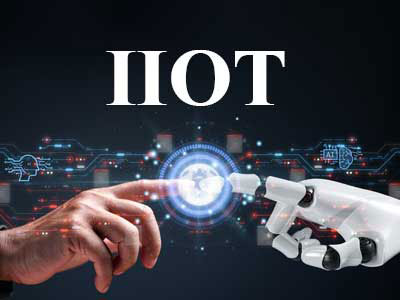Key Takeaway
The Industrial Internet of Things (IIoT) aims to enhance manufacturing processes in industrial applications. It does this by connecting devices and systems to monitor and maintain assets more effectively. With IIoT, companies can collect and analyze data in real time. This leads to improved efficiency, reduced downtime, and predictive maintenance. Ultimately, the goal is to boost productivity, ensure safety, and lower operational costs. By using IIoT, businesses can make smarter decisions and optimize their operations for better performance.
Enhancing Industrial Efficiency and Productivity
Imagine walking into a factory where every machine communicates, data flows seamlessly, and operations are streamlined to peak efficiency. That’s the core of IIoT’s impact on industrial productivity. By connecting devices and machinery, IIoT facilitates real-time monitoring and control, leading to less downtime and higher output. For instance, sensors can detect inefficiencies in a production line, allowing operators to make immediate adjustments. This not only speeds up the manufacturing process but also ensures that every step meets quality standards without wastage.

Enabling Predictive Maintenance
Predictive maintenance transforms the traditional maintenance model into a proactive strategy, akin to a regular health check-up for machinery. This method, facilitated by the Internet of Things (IoT), involves using data from sensors to anticipate potential equipment failures before they occur. For instance, by monitoring vibration levels in motors, sensors can identify signs of wear and tear early, allowing for timely interventions. This not only prevents the inconvenience of sudden breakdowns but also optimizes operational costs and enhances overall productivity.
For a newly onboarded engineer, understanding and implementing predictive maintenance is about shifting focus from reactive to proactive management. It’s not just about fixing problems as they arise but preventing them from happening in the first place. This shift requires a keen attention to detail and an analytical approach to the data provided by IoT devices.
By adopting predictive maintenance, you’re not just maintaining equipment; you’re actively contributing to a more efficient and reliable production process. Remember, a stitch in time saves nine. Embrace this smart maintenance culture to ensure smoother operations and fewer surprises down the line. This knowledge not only makes your job easier but also ingrains a mindset of continuous improvement—vital for any successful engineer in the industry today.
Improving Safety and Compliance
In the industrial realm, integrating the Industrial Internet of Things (IIoT) into safety protocols isn’t just innovative—it’s essential. IIoT systems employ a network of sensors to vigilantly monitor conditions in real-time, ensuring any hazardous situations like toxic gas leaks or extreme temperature fluctuations are detected promptly. This technology plays a pivotal role in maintaining strict adherence to safety standards, providing a crucial data trail for compliance.
For you, as a newly joined engineer, understanding how to leverage IIoT can substantially elevate your contribution to workplace safety. Imagine being able to prevent accidents before they occur or addressing potential safety breaches before they become costly legal battles. By integrating IIoT solutions, you help safeguard the well-being of the workforce, steering clear of hefty fines and reinforcing a culture of safety.
Your role involves not just implementing these technologies but also interpreting the data they gather to make informed safety decisions. This proactive approach doesn’t just protect—it also demonstrates a commitment to safety that goes beyond basic compliance, making you an invaluable asset to any engineering team. Embrace this technology, and you will play a key role in shaping a safer, smarter industrial environment.
Optimizing Resource Management
Resource management in the realm of the Industrial Internet of Things (IIoT) transcends traditional approaches, focusing on the intelligent orchestration of materials, energy, and human resources. This methodology aims not only to amplify efficiency but also to substantially reduce waste. For instance, smart meters and sophisticated energy management systems are pivotal in scrutinizing consumption patterns. By doing so, they offer actionable insights that promote more sustainable operational tactics.
As a new engineer, your role involves more than just applying these technologies. It’s about leveraging them to devise solutions that align economic gains with environmental stewardship. This dual focus does not merely cut operational costs; it propels industries towards their sustainability objectives. Understanding and mastering these systems can make you a key player in driving your company towards smarter, greener production methods.
Remember, the effective use of IIoT is not just about technology—it’s about envisioning a future where efficiency and sustainability converge. By engaging with these systems, you’re not only enhancing your skill set but also contributing to a larger, global goal of sustainable industrial practices.
Driving Innovation in Industrial Processes
The Industrial Internet of Things (IIoT) isn’t just a tool for keeping things running—it’s a catalyst for redefining the manufacturing landscape. Imagine a world where every piece of data from the production floor is a building block for innovation. This is what IIoT offers: a chance to harness data analytics and machine learning to not only monitor but radically transform operations.
Consider how advanced robotics can be tailored for custom production or how AI integrates into systems for smarter, faster decision-making processes. For you, as a newly joined engineer, this means stepping into a role where your work directly contributes to pioneering advancements. Each project can push the boundaries of what’s currently possible, turning theoretical possibilities into real-world applications.
Embrace this dynamic environment—it’s your playground to innovate and impact the future of manufacturing globally. Remember, the key lies in continuously learning and applying your knowledge creatively. As you embark on this exciting journey, keep your approach focused and your curiosity sharp. Let IIoT be your guide to not just adapting but leading the change in the industry.
Conclusion
Adopting IIoT isn’t merely a technical upgrade; it’s a strategic revolution. By understanding and deploying IIoT solutions, you, as a budding engineer, have the potential to drive significant improvements in your industry. From elevating productivity to pioneering new methods, the journey with IIoT is about turning possibilities into realities. Embrace this path, and you’ll not only contribute to your company’s success but also shape the very landscape of modern industry.
